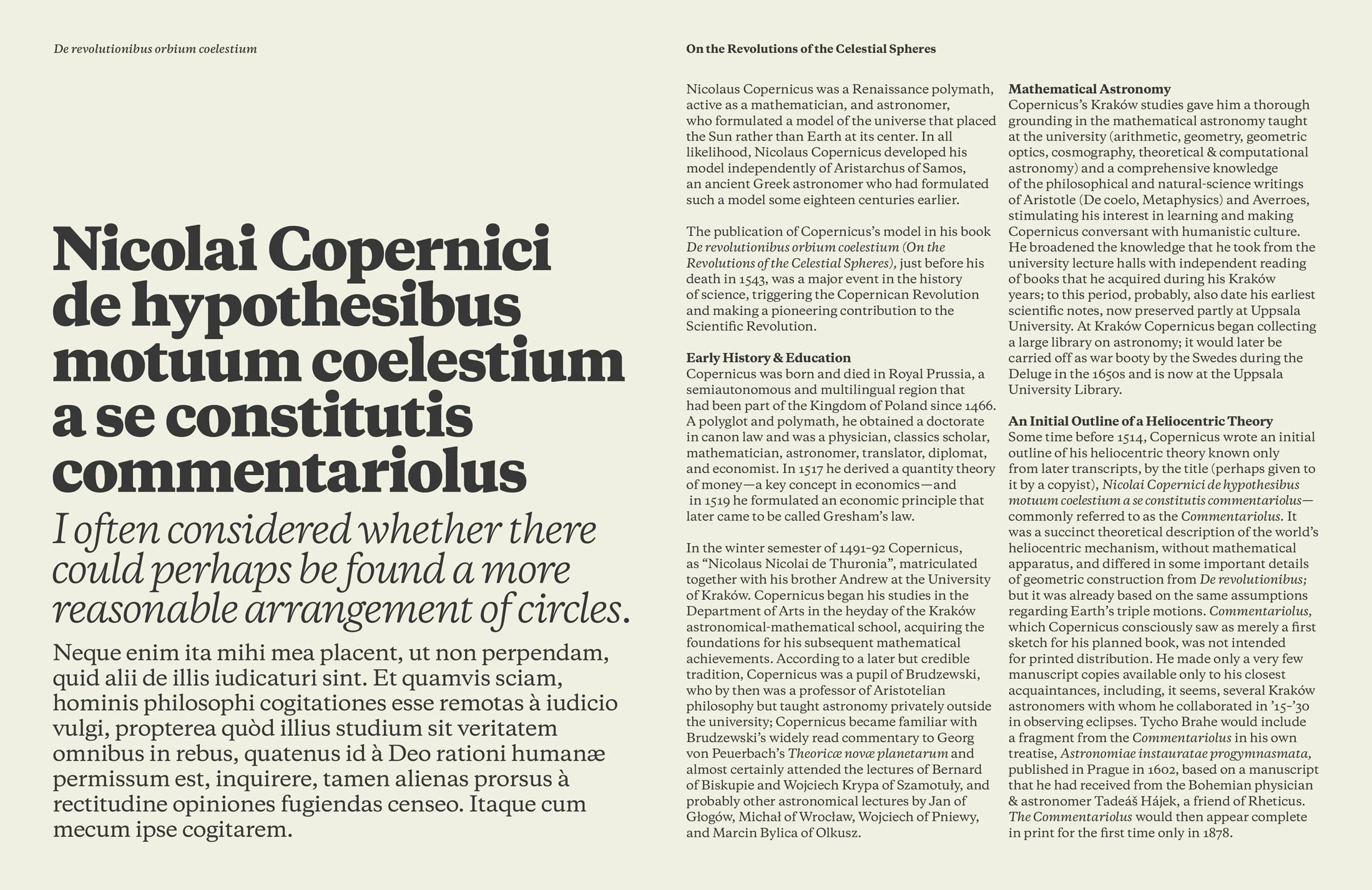Copernicus
About Copernicus
Copernicus is a revivification of the design of Robert Granjon from the 1560s, revived as Plantin (Series 110) by Frank Hinman Pierpont for Monotype in the 1910s. The typeface is an homage to this ubiquitous workhorse, more sturdy than graceful with a wide stance, and quite different from other 16th-century type. The type was drawn as a Plantin for the 21st century, reflecting the technology and aesthetics of today. The Norwegian lutenist Rolf Lislevand's thoughts about bringing the past into the present provided guiding principles: "For years people tried to play early music as closely as possible to the way it was played at its time of origin, but that's a philosophical self-contradiction. The first question is whether it's possible at all to replicate the performance of a musician who lived centuries ago. As far as I'm concerned, reconstruction is not really interesting at all. Do we really want to act as if we hadn't heard any music between 1600 and the present day? I think that would be dishonest."
Originally released 2009.10 as Galaxie Copernicus. "Galaxie" was dropped for V2, 2013.08.
Supported Languages
Afrikaans, Albanian, Basque, Bosnian, Breton, Catalan, Corsican, Croatian, Czech, Danish, Dutch, English, Esperanto, Estonian, Faroese, Finnish, French, Galician, German, Greenlandic, Hungarian, Icelandic, Indonesian, Irish, Irish Gaelic, Italian, Kurdish, Latin, Latvian, Leonese, Lithuanian, Lower Sorbian, Luxembourgish, Malay, Maltese, Manx, Māori, Norwegian, Occitan, Polish, Portuguese, Rhaeto-Romanic, Romanian, Sami, Scots, Scottish Gaelic, Serbian, Slovak, Slovene, Slovenian, Spanish, Swahili, Swedish, Tagalog, Turkish, Upper Sorbian, Walloon, Welsh
